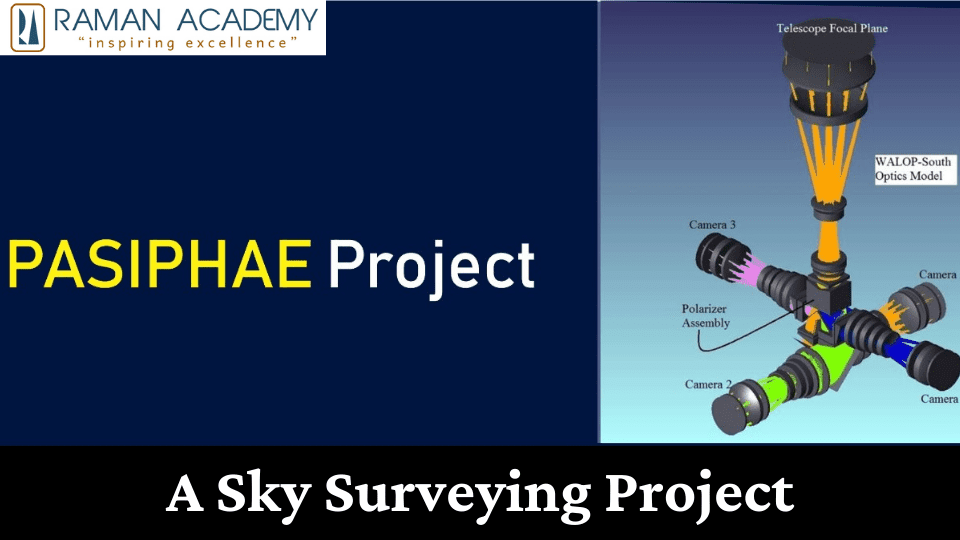PASIPHAE, named after the Minoan Queen, is an abbreviation for Polar-Areas Stellar-Imaging in Polarization High-Accuracy Experiment.
LOCATION: The experiment is set to take place at the Skinakas Observatory, Crete, and the South African Astronomical Observatory in Sutherland, South Africa.
AIM: to map, with unprecedented accuracy, the polarization of millions of stars at areas of the sky away from the Galactic plane, in both the Northern and the Southern hemispheres.
ULTIMATE GOAL: to clear the path towards the detection of the imprint of inflation on primordial light.
ABOUT
- It is an opto-polarimetric survey aiming to measure the linear polarization from millions of stars.
- The survey will use two high-tech optical polarimeters to observe the northern and southern skies, simultaneously.
- Combined with stellar distances provided by ESA’s Gaia mission, this data will allow, for the very first time, to construct a tomographic map of the Galactic magnetic field.
- Tomography is imaging by sections or sectioning through the use of any kind of penetrating wave.
- The distances to these stars will be obtained from measurements of the GAIA satellite.
- GAIA is on a mission to chart a three-dimensional map of our Galaxy, the Milky Way, in the process revealing the composition, formation and evolution of the Galaxy. It is a European Space Agency astronomical observatory mission.
- PASIPHAE is based on the unique, innovative, low-systematics, high-efficiency technology of WALOP (the Wide-Area Linear Optical Polarimeters).
- WALOP, a vital instrument for the PASIPHAE Project, is being developed at Inter-University Centre for Astronomy and Astrophysics (IUCAA), India.
WORKING PRINCIPLE
- The theory is that a small fraction of CMB radiation emitted during the universe’s rapid inflationary phase should have its fingerprints on a specific kind of polarisation, known technically as B-mode signals. These B-modes are theorised to have arisen as a result of powerful gravitational waves seen during inflation.
- However, these signals have been difficult to isolate because of the enormous amounts of polarised radiation in our own Milky Way, caused by large dust clouds that fill the galaxy.
- In essence, PASIPHAE endeavours to ascertain the effect of these obstacles, so we can, ultimately, learn how things played out in the early universe.
SIGNIFICANCE OF THE PROJECT
- The PASIPHAE polarimetric map will be used to perform magnetic tomography of the Galaxy.
- It will allows to deduce the 3-dimensional structure of the magnetic field and the dust that resides in our own Galaxy.
- This dust acts as the primary foreground in experiments targeting the polarization of the cosmic microwave background in their quest to probe the first instants of the Universe, as well as the, yet-unknown, physics of gravity at unprecedentedly high densities and temperatures.
- PASIPHAE will open an invaluable and vastly under-explored window to the Universe, through the study of starlight polarization.
- Beyond studies of the early Universe, the survey will lead to leaps forward in some of the most actively pursued areas in Astrophysics, including high-energy astrophysics, stellar astrophysics, and interstellar medium dynamics
COLLABORATION PARTNERS
- Astrophysics Group in Crete,
- Inter-University Centre for Astronomy and Astrophysics (IUCAA), Pune, India (the world’s foremost laboratory of optopolarimeter design and development),
- South African Astronomical Observatory,
- California Institute of Technology in the US,
- Institute of Theoretical Astrophysics at the University of Oslo
SOURCE: https://indianexpress.com/article/explained/explained-how-pasiphae-will-peep-into-the-unknown-regions-of-the-sky-7357628/ , http://pasiphae.science/

